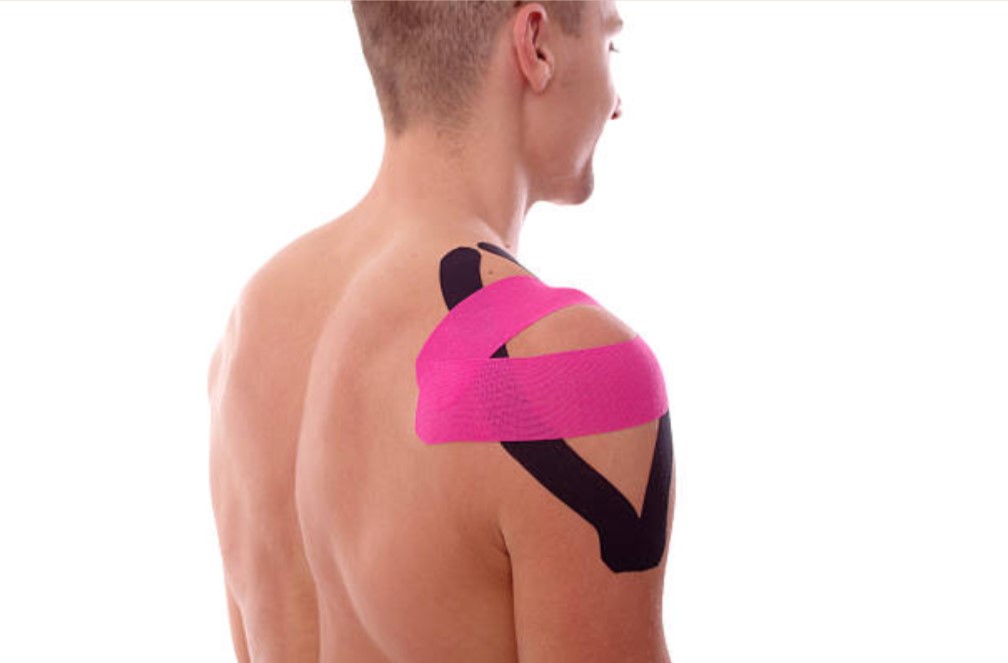KINESIOLOGY TAPING
What is kinesiology taping?
Kinesiology taping is a therapy that uses tape to mimic the function of muscles in the body to help support injuries, reduce pain and promote healing. Kinesiology tape is a thin, elastic tape that helps athletes with pain relief and joint support in tendons and muscles. It can aid in reducing pain, supporting a joint, promoting circulation and healing, and decreasing swelling. Overuse and injury to a muscle can cause it to lose it’s elasticity. Kinesiology tape can mimic the elasticity of a human muscle to correct and heal the joint. It promotes the body’s natural healing process and treats many different sports injuries when applied properly.
What is the kinesiology taping method?
The kinesiology taping method may improve physiological conditions on several body systems. These body systems include circulatory, lymphatic, joint, neural, muscular and fascial. It is used by physical therapists, sports medicine doctors, and trainers. The theory behind kinesiology taping is that applying it on the injured area with a specific taping pattern will help to promote healing in the area faster. In short, the patterns follow how the muscles and ligaments of the body move and function normally.
Who is using kinesiology tape?
There are many different medical professionals using the taping method such as physical therapists, occupational therapists, athletic trainers, chiropractors, physicians and more. Most athletes use taping methods to recover from sports injuries in addition to avoiding re-injury from occurring.

How does kinesiology tape work?
When kinesiology tape adheres to the body it pulls the top layers of skin which creates more space between the skin and muscles. This space relieves pressure from the injury and encourages better blood circulation to occur. This allows the absorption of nutrients in the injured area and promotes faster healing. Health professionals know the many different taping techniques that are unique to each injury.
What are the benefits of kinesiology tape?
Kinesiology taping has many benefits including:
- Pain relief. Although taping is not a medication, it can be effective in alleviating pain by allowing blood flow to enter the injured area.
- Reduce swelling and inflammation. By taping the top layer of skin away from the muscle, fluids that cause swelling can easily drain from the injury.
- Quick recovery. Patients notice that their bruising disappears quicker under the tape than everywhere else. This is because of the mechanism that lifts the skin away from the rest of the injury.
- Prevent muscle spasms and cramping. Since kinesiology tape promotes blood circulation, it can also eliminate uncomfortable muscle spasms and cramps.
- Support injured muscles. The tape supports injuries like a splint without restricting range of motion because of its elastic properties.
- Allow athletes to stay active. Since kinesiology tape is nonrestrictive, it allows patients to continue training without having to worry about overstretching the injured muscles.
- Enhance strength and muscle tone. Kinesiology tape can support weak muscles and also improve activation.
How long do you leave kinesiology tape on for?
Kinesiology tape is designed to be left on for long periods of time, usually 3 to 4 days. When the tape is properly adhered to the body, patients should not worry about it falling off and can carry on with their daily activities like working out and showering.
Do chiropractors use kinesiology tape?
Chiropractors may use kinesiology tape in between chiropractic adjustments to ensure the patient is comfortable and promote healing. When this tape is placed it will help with rehabilitation and enhance the results of sports injury treatment. Ultimately, your doctor will be able to tell you if kinesiology tape can be used on your injury.